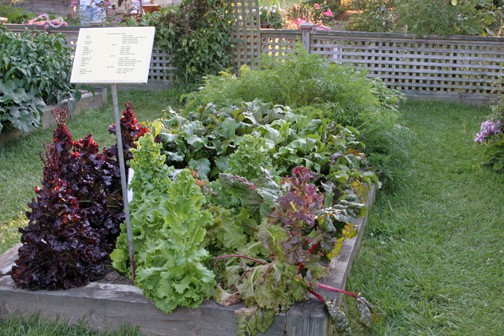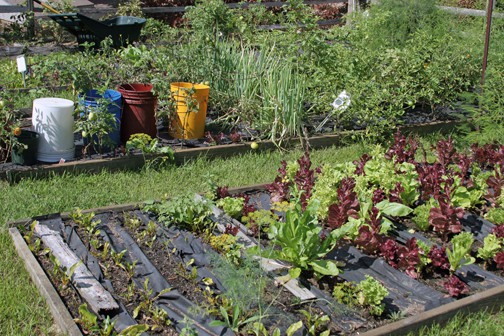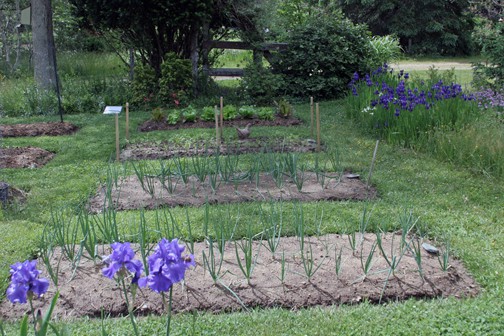Report From An Opinionated Gardener – April 15
Don’t have to be raised. I was explaining this to a consultation customer today who was interested in growing vegetables in her sunny front yard. While this area did have the perfect light for veggies, the space would have looked chopped if she installed typical wood or stone bounded raised beds.
The point of raised bed vegetable gardening is to create a space where the soil is richly amended and able to be tended without walking on the area. Paths where the gardener walks pack down soil and produce large stretches of the garden that aren’t productive.
Beds that are about four feet deep can be tended from each side and this loose, un-compacted soil is able to support a dense planting of edibles. You can place your vegetables closer together and grow more food in limited areas if your soil isn’t compacted.
I explained to my consultation customer that if just dug deeply and amended the soil in the area where she wanted to plant, and then didn’t walk on those beds, she would have all the advantages of raised beds without the disadvantages. If your “raised beds” aren’t actually raised you avoid the expense of building the framework and importing soil. Later, should you decide to move the garden or not grow vegetables at all, the area is easily converted to perennials, shrubs or lawn.
This all speaks to our willingness to be flexible and view things with new eyes…a useful skill in and out of the garden.

Traditional raised beds are built up at least eight inches above ground level.

This garden is made of what I would call barely raised beds - they are bordered and bounded by lumber but only about two inches above ground level.

Here is the concept: beds that are narrow enough to be tended without walking on them, allowing for deep, amended soil that can support dense plantings. These can be at ground level without timber or stone borders.

